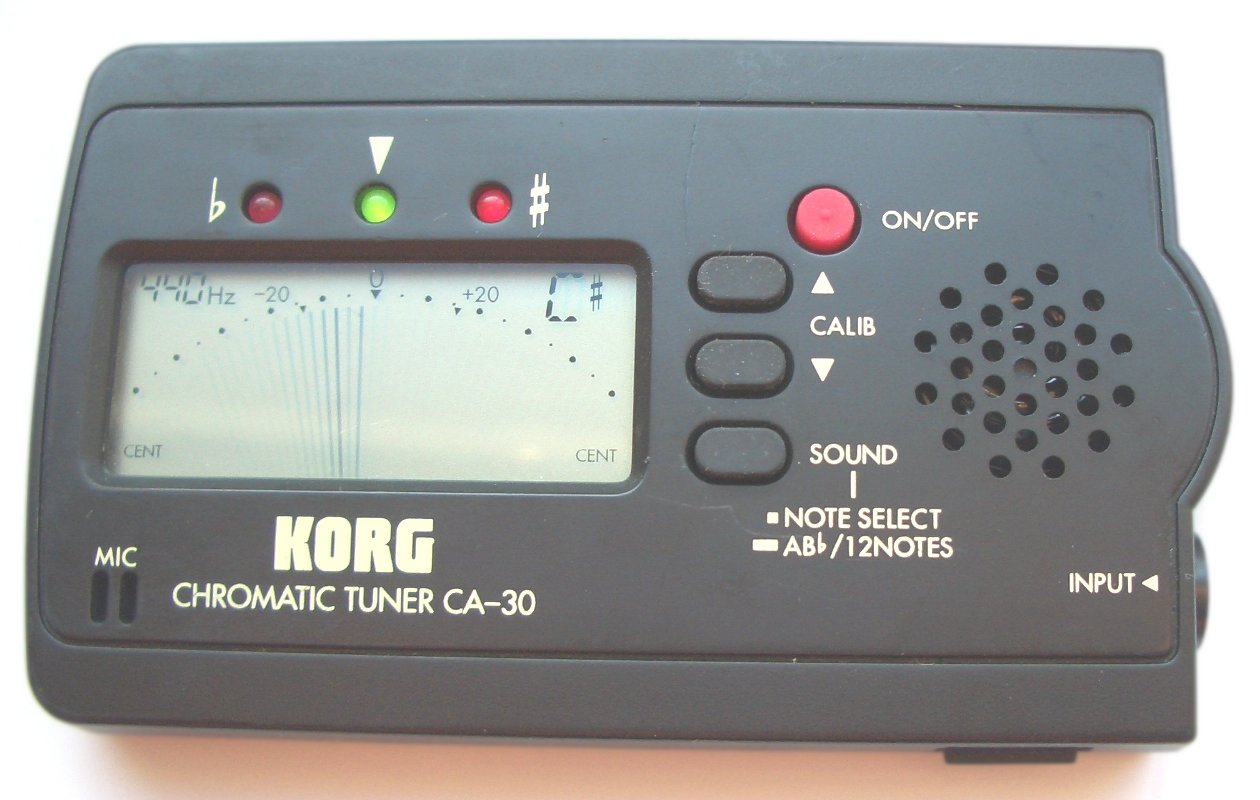
Electronic tuners or tuner apps have become required tools for musicians who are serious about playing well in tune. But how do they work and how do you use them effectively?
First thing you need to know in order to use a tuner effectively is that it will not actually tell you whether you are in tune. All a tuner does is measure the pitch frequency of whatever sound you play into it and indicate how your pitch frequency compares to the pitches programmed into the tuner. If your pitch is higher than the programmed pitch, the tuner indicates that you are playing sharp, lower than the programmed pitch is flat. When your pitch frequency matches the programmed pitch, then, hooray, you will be tempted to say that you are ‘in tune,’ which is what you want, right?
But how often have you heard or even said yourself “But I must be in tune, I checked my pitch with a tuner?” Remember when I said that the tuner will not tell you when you are ‘in tune?’ Intonation is affected by many, many factors. In addition to whether your instrument is warm or cold, whether you are playing loudly or softly, high or low, etc., playing in tune with others and even just yourself involves constant attention and adjustment to what is going on around you. Your tuner will not tell you whether you are in tune with the trombones in your band or orchestra, or even the flutist down the row from you. Only your ears can do that! Check out the post on Intonation in Action to find out more about this: http://wp.me/p1ptSQ-8X
So what is a tuner good for? Instead of thinking of the tuner’s meter as telling you whether you are in tune, instead think of it as a diagnostic tool, indicating when you hit a target. As you work to hit that target, you will have to master the ability to manipulate the pitch, pushing it higher or lower, to play the pitch frequency that matches the tuner’s programming. Practice with a tuner can help you develop flexibility and control, both necessary to sounding good.
You can also use a tuner to chart your pitch tendencies. Checking every note on your instrument and learning which notes you tend to play sharper or flatter on in comparison to the others is crucial to beginning to gain conscious control of your intonation. Check all your notes, make a chart of your tendencies, then check them periodically. (This is especially valuable for players who play many instruments. The pitch tendencies of every instrument are different, so make sure you have all the intonation information you need to play them all well!)
Practicing with an electronic tuner can be especially effective for working on tone production and control. You’ve probably noticed how sensitive the meter or display can be. Try playing a long sustained note and notice how much the display changes. Does it seem to jump for no reason? Does it show that your pitch rises or falls? What happens when you start to run out of air? What does it show when you crescendo or decrescendo? Maintaining a steady tone that doesn’t change pitch is another necessary skill to sounding good.
Use your electronic tuner or a tuner app as a diagnostic tool to identify pitch and tone inconsistencies, and then use it to develop better pitch flexibility and control. You will get much more out of it than if you try using it to tell you whether you are ‘in tune.’
